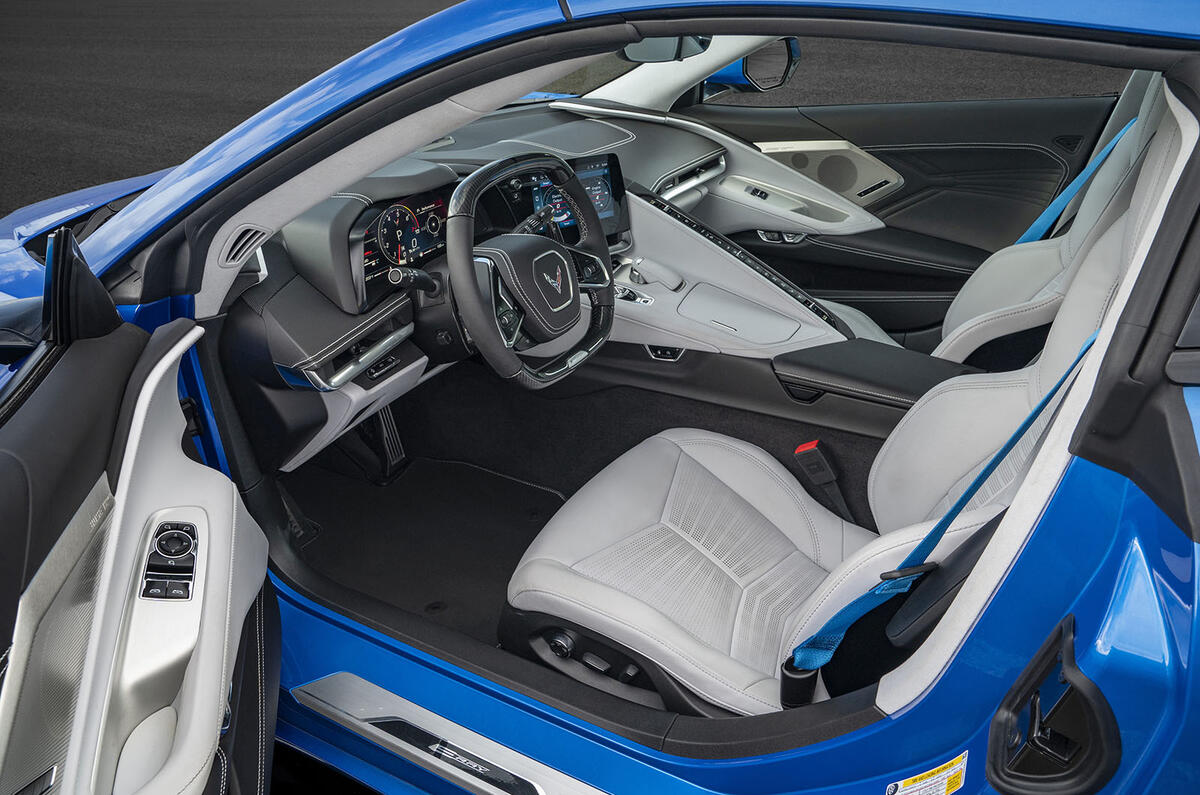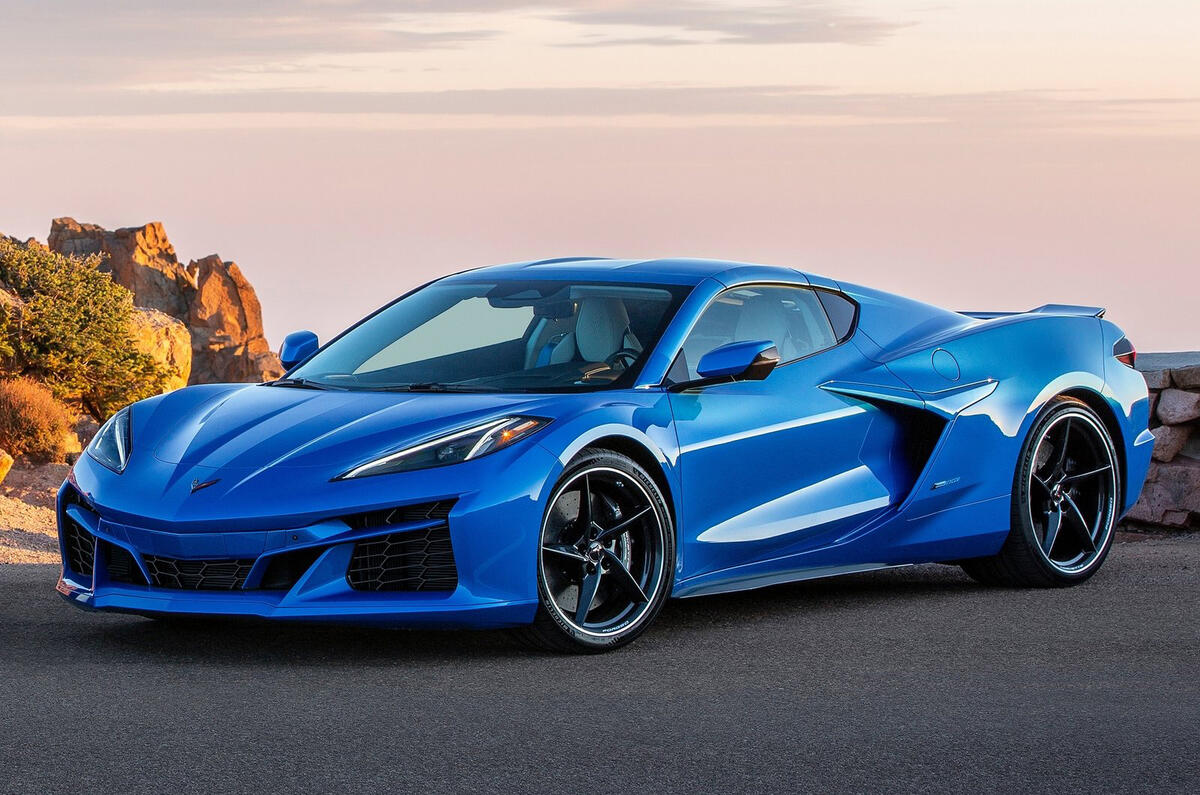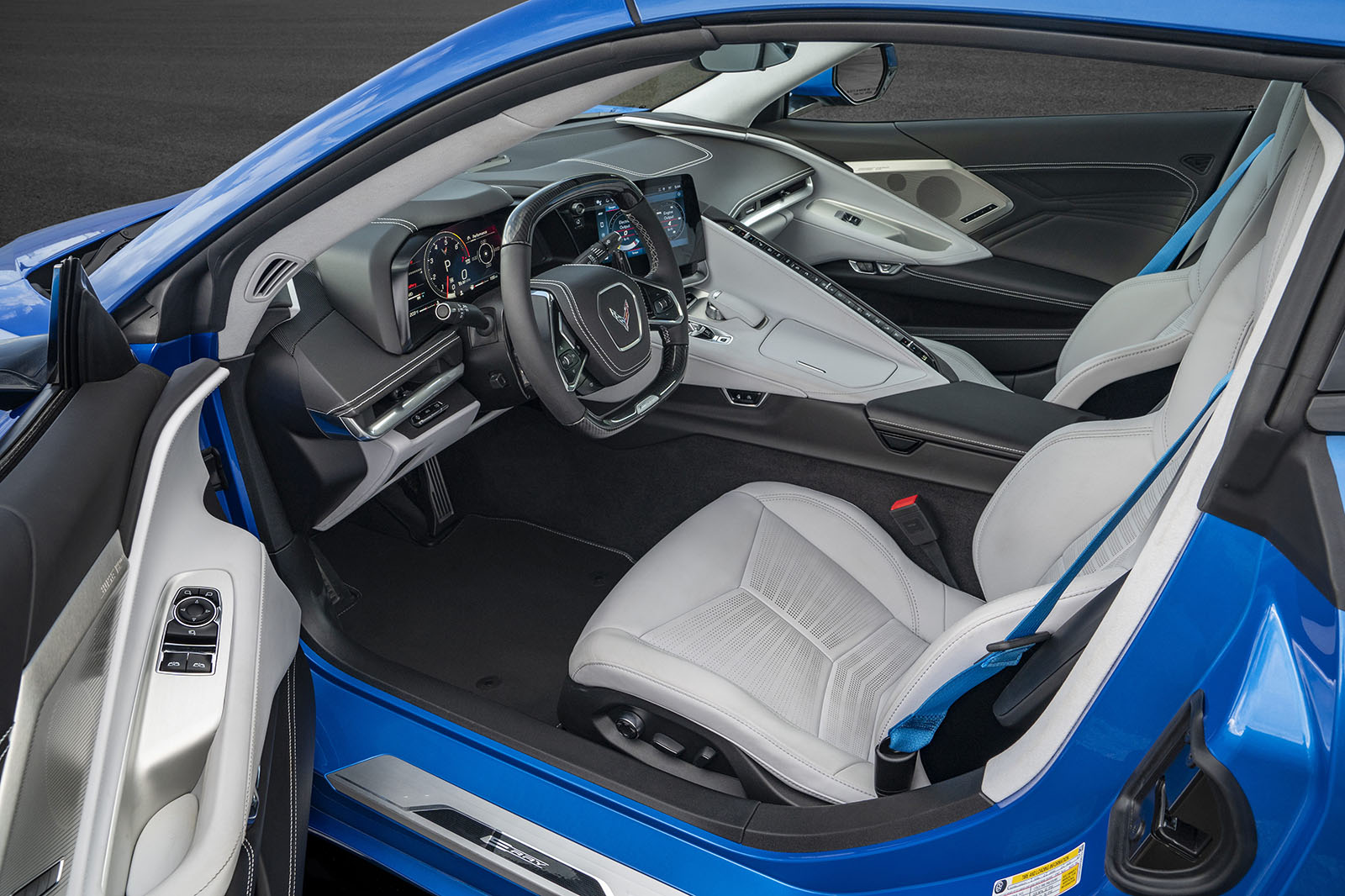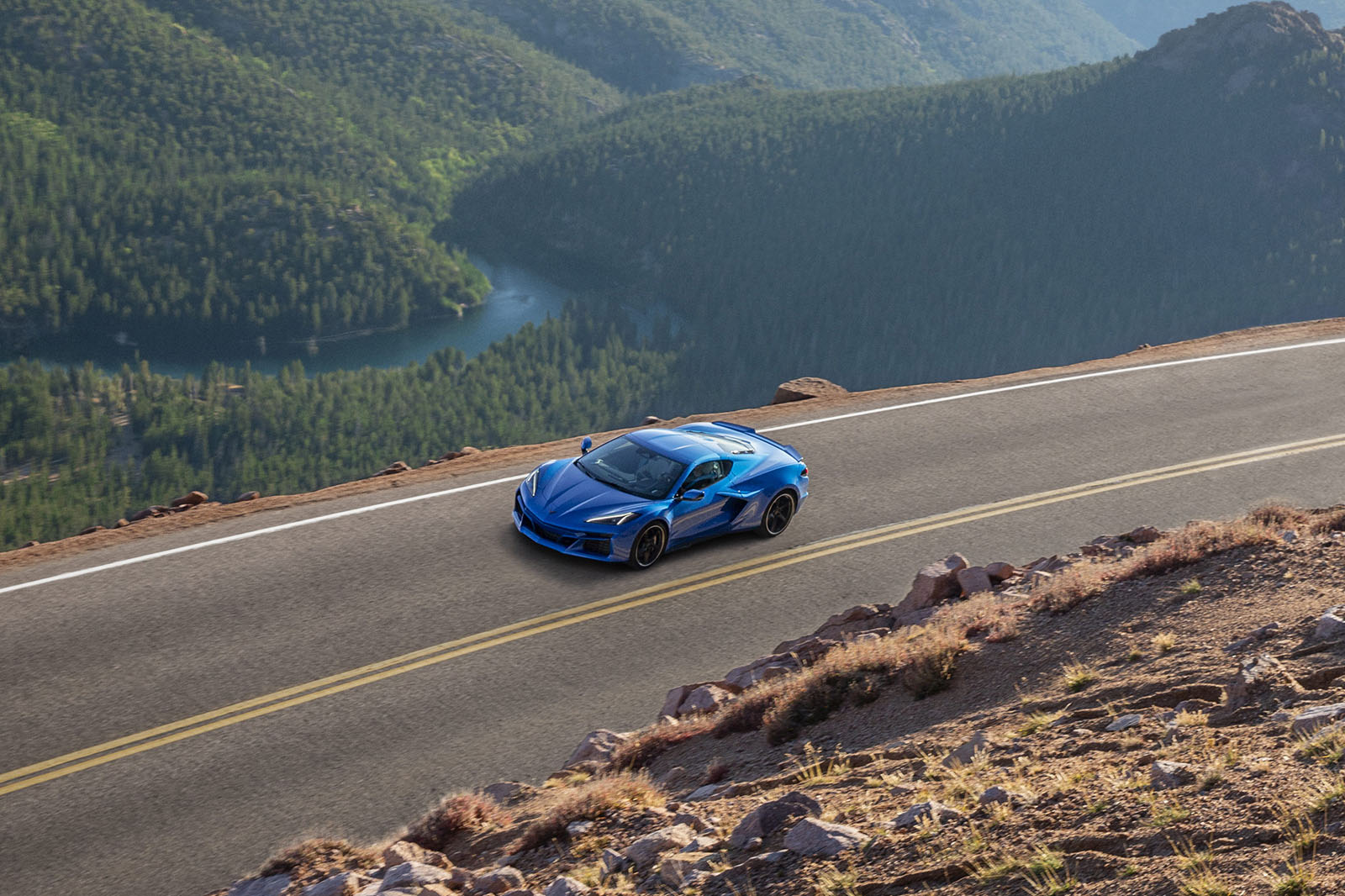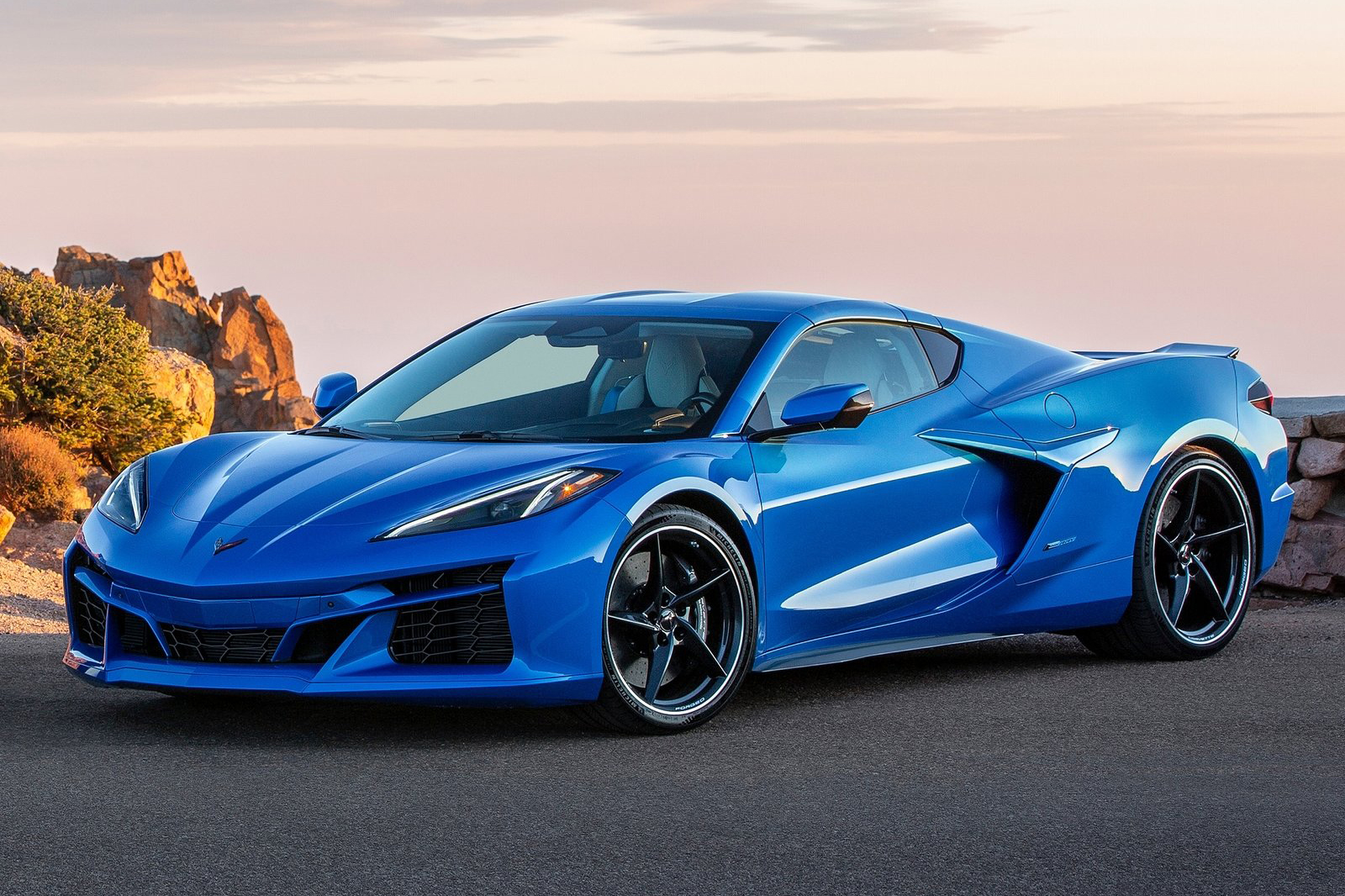While the E-Ray has an EV-only mode, this will be little used. It has to be selected before the ignition is turned fully on, and performance is limited to a mere 45mph, with less than five miles of range. As its Stealth mode name suggests, it is intended as a sneak-away option to avoid disturbing neighbours.
Beyond that, the E-Ray keeps the same dynamic modes as the regular Stingray: Tour, Sport, Track and Weather (for slippery conditions), plus a configurable My Mode and a Z setting, which brings up a shortcut screen to tweak individual chassis and powertrain settings on the fly.
Under gentle use, all power comes from the combustion engine, but requests for harder acceleration get the electric motor delivering instant torque. The contribution from the front is indicated by a synthesised whirr through the speakers, which supplements the entirely natural V8 noises from the rear rather than trying to compete with them.
Fully lit, the E-Ray feels impressively quick, with increased traction obvious in the way it launches from rest and punches its way out of tight corners without drama. It feels like a big car on tight roads, but not noticeably more so than the standard Stingray.
The E-Ray also gets carbon-ceramic brakes as standard, which proved tireless under huge thermal loadings. It might not be intended as a circuit car, but it is seriously effective on track, such as northern California’s Thunderhill Raceway, where the car felt brutally fast and the launch control mode delivered a 2.4sec 0-60mph time, according to the car’s on-board timer. That figure makes it the quickest standard Corvette of all time, despite the weight penalty over the Z06.
Only at higher speeds does the E-Ray start to fall behind. Chevrolet says there is no electric assistance at all beyond 150mph, with the hybrid system becoming ballast from there to the 180mph top speed.





